Building
Kumiki Japanese Woodworking | How to Repair Buildings without Nails
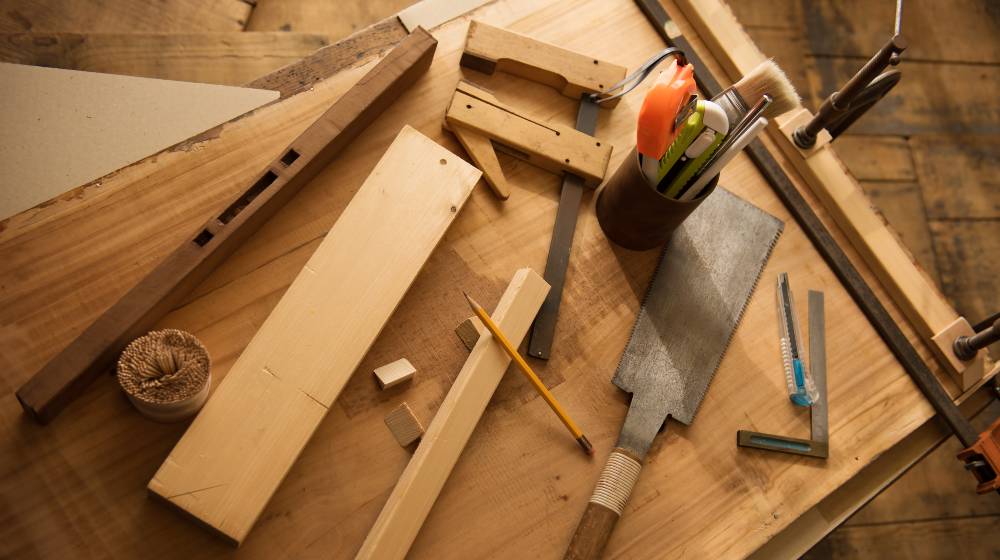
Kumiki is a puzzling phenomenon for the traditional Westerner. Wooden pieces fit together like jigsaw puzzles held with nothing but pure pressure.
If you want to broaden your horizon in woodworking, this article is for you!
RELATED: Building Shelter Without Tools
In this article:
- What is Kumiki?
- History and Origin of Kumiki
- What Makes Kumiki Japanese Woodworking Unique?
- How to Build and Repair Buildings without Nails
- What Makes Kumiki Japanese Woodworking Tools Special?
- Basic Kumiki Japanese Woodworking Tools
Your Essential Guide to Kumiki Japanese Woodworking
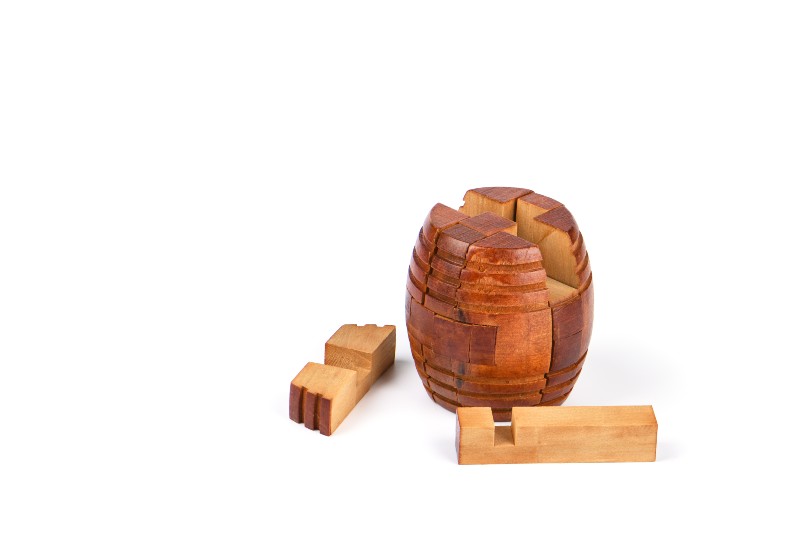
What is Kumiki?
Kumiki is a traditional Japanese woodworking technology. Instead of using nails, carpenters use elaborate grooves to combine wood.
By carving interconnected patterns, wooden pieces could fit together perfectly. This eliminates the need for external fastening materials other than wood.
History and Origin of Kumiki
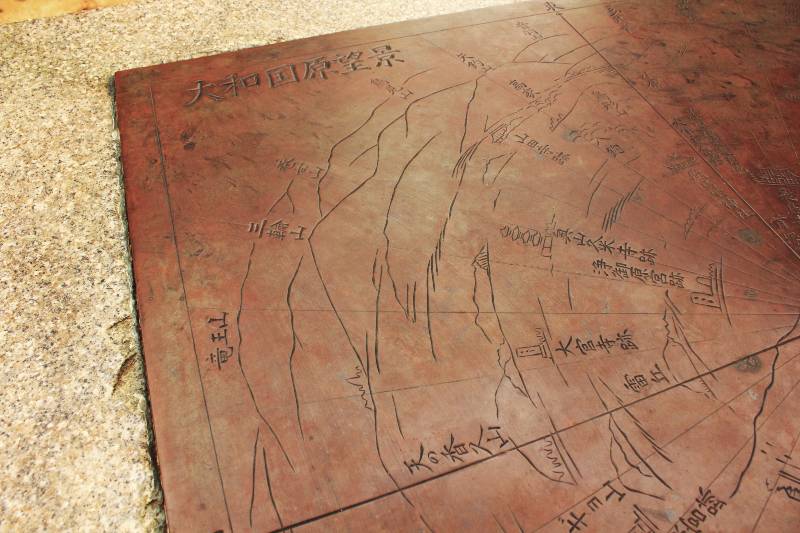
Kumiki developed by necessity. It began in 8th century Japan, a time when arts and culture were in full bloom.
Known as the Asuka period, rampant construction of buildings was all the rage. The problem is there is not enough metal available.
This is where Japanese ingenuity comes in. Instead of relying on external fasteners, artisans used pressure alone to bind wood.
What Makes Kumiki Japanese Woodworking Unique?
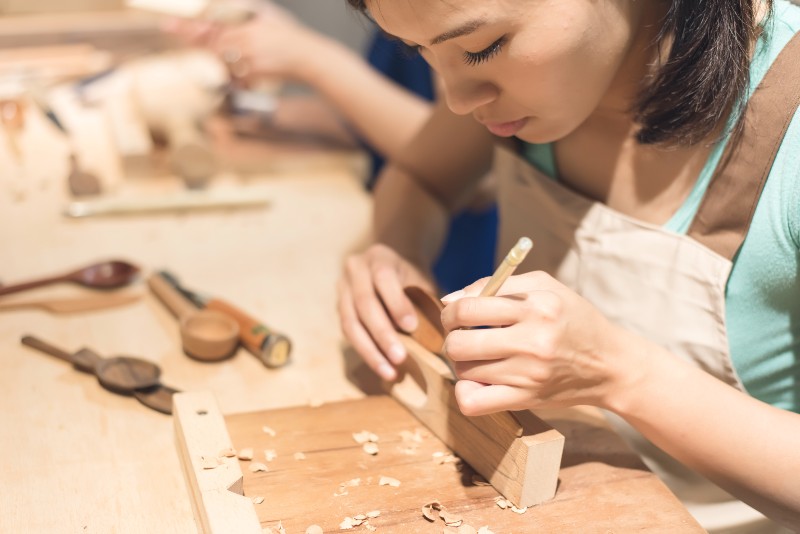
Wooden pieces fit seamlessly together through pressure. Perfect pressure is possible through meticulous woodworking.
Japanese carpenters achieve this by exact calculation and precise cutting and arranging. Symmetry is key.
Though there are common geometric kumiki patterns, the possibilities are limitless. Artisans could use all sorts of patterns as long as there is absolute symmetry.
How to Build and Repair Buildings without Nails
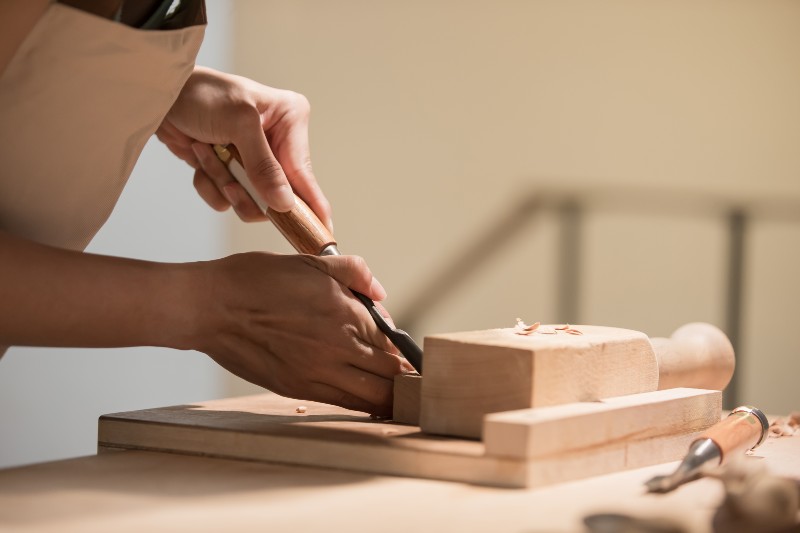
1. Use the Best Wood
First, the carpenter chooses and sources the wood. They only consider the highest quality cypress and cedar trees.
These particular wood types are durable and can last for more than a hundred years. Aside from these qualities, cypress and cedar are bright-colored and beautiful.
2. Do Everything by Hand
After getting the wood, the carpenters do everything by hand. From carving to assembling the wood, they never use electric-powered machinery
This requires extreme accuracy and control. Precise measurements and meticulous planning are also key.
3. Work with Precision
Every piece of wood must not exceed 0.1mm accuracy. There is no room for error even how small in kumiki.
This and perfect symmetry allow the pieces to fit together without using nails. Achieving absolute symmetry is of utmost importance to the success of the job.
4. Use Special Kumiki Tools
To achieve precision, Japanese carpenters use special woodworking tools. These tools are different from their Western counterparts.
Aside from the design, Japanese tools work in general through pulling motion. This factor provides the user with more control over the tool.
What Makes Kumiki Japanese Woodworking Tools Special?
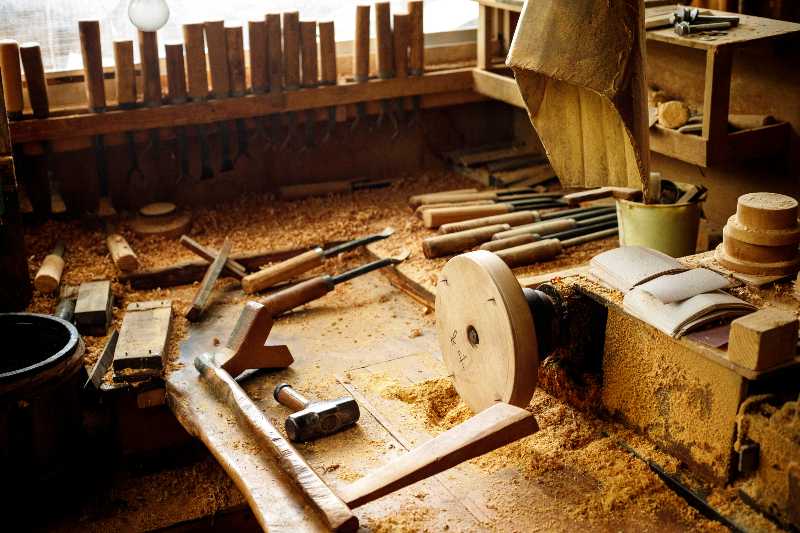
Japanese craftmanship harkens back to Ancient sword makers. This marriage of function and precision reflects on the art of Japanese woodworking.
We can sum up Japanese working into five distinct qualities. These are:
1. Remarkable Tradition
Japanese tool-making tradition arose from its makers' command of material and ingenuity.
2. Efficient Design
A typical Japanese woodworking tool is a study of productivity and efficiency.
3. Functional Craftmanship
As for how they made swords, the Japanese mastered the art of forging functional steel.
4. Choice of Steel
The Japanese mastered the way they forge and temper steel to achieve perfection.
5. Sublime Beauty
Another reflection of Japanese art, their tools combine simplicity and purpose.
RELATED: How To Craft Sharp Stone Tools To Survive The Great Outdoors
Basic Kumiki Japanese Woodworking Tools
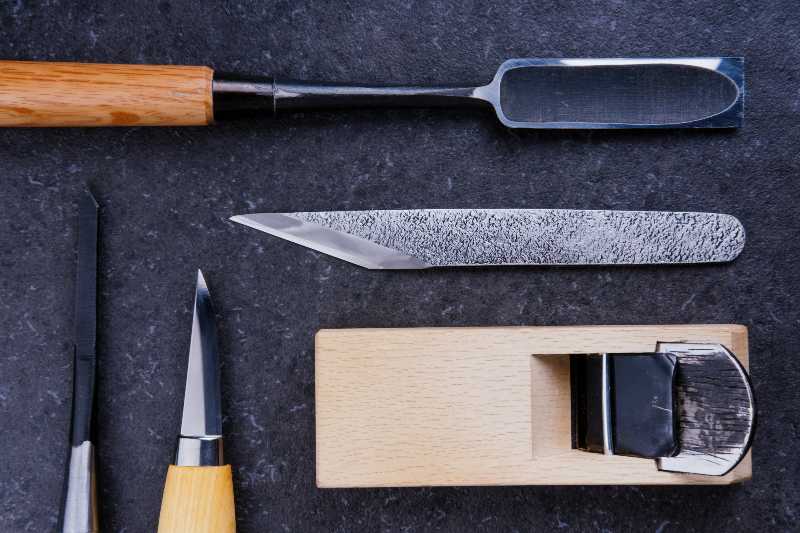
The Chinese have a huge influence on Japanese tool-making. They modified tools so that carpenters could adapt to indigenous needs.
Since metal was scarce in the Asuka period, the common building material is wood. These tools are:
1. Japanese Saw
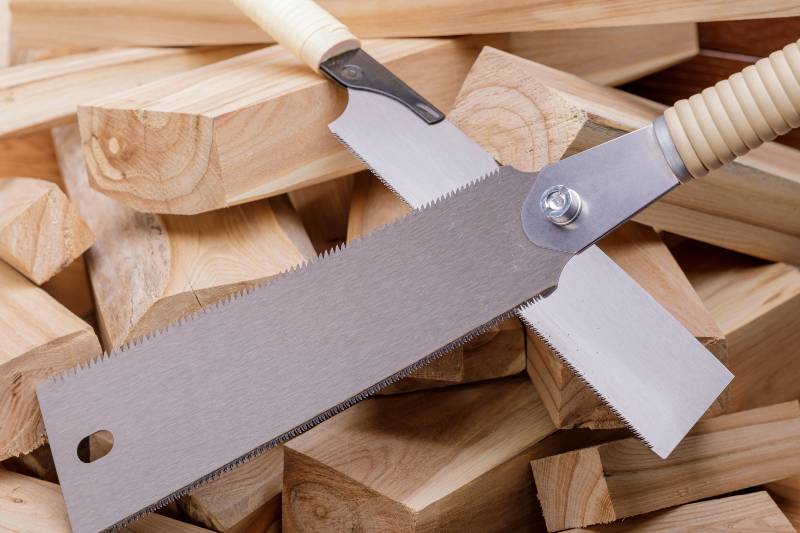
Compared to Western saws, the Japanese saw or nokogiri works differently. It cuts by pulling it towards the user.
This gives the user better control of the tool. This also explains why Japanese saws are perfect even for working on narrow corners.
In fact, there are various saws used for woodworking. From crosscutting to shaping fine dowels, Japanese saws are a breeze to use.
2. Japanese Chisel
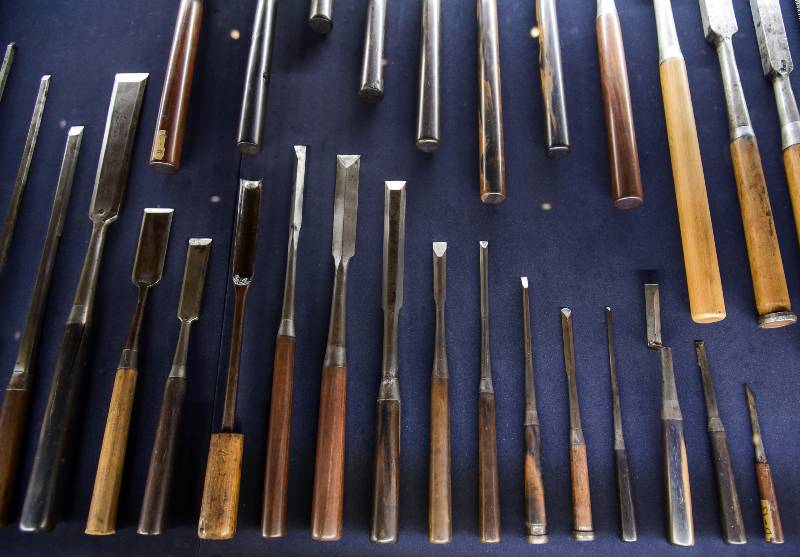
The Japanese chisel or nomi is a core tool in woodworking. It is the key equipment in shaping the wood.
Unlike its Western counterpart, the Japanese chisel has more variations. These variations fit different types of jobs.
There are chisels used for striking, paring, and heavy timber. Japanese carpenters though work more often on softer wood.
3. Japanese Planer
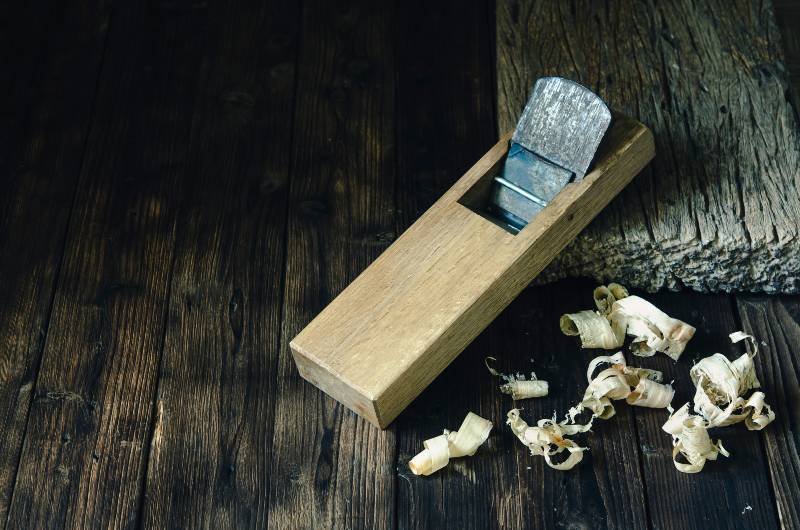
A simple wooden block attached with a blade, this one is another essential carpentry tool. Also known as kanna, its blade tapers to achieve more uniform shaving.
You adjust it by tapping the blade on both sides. Like most Japanese tools, the kanna works by pulling.
There are different types of Japanese planes. The yarigana, for one, is a spear-shaped plane dating back from ancient times.
4. Japanese Woodworking Hammer
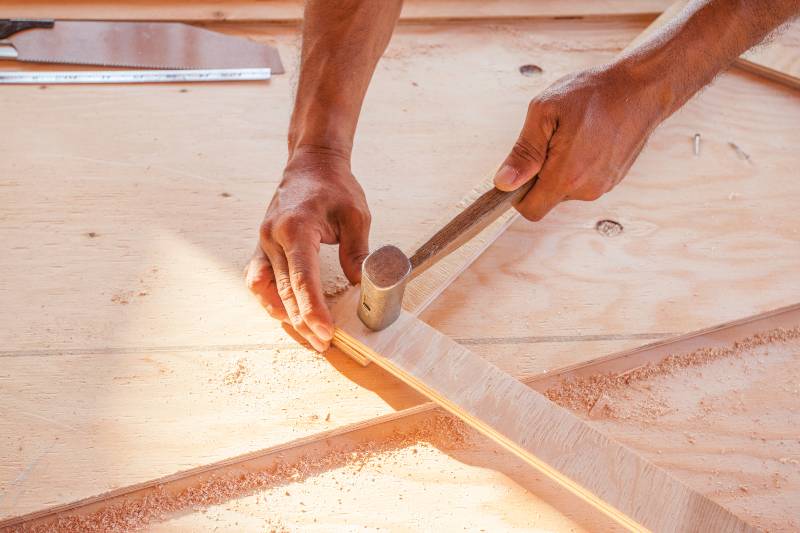
Made of heavy-duty steel, the Japanese woodworking hammer is also called genno. Compared to western hammers, it has a double face instead of a claw on the other end.
Though designed for working on wood, its curved side is also used to drive nails. This makes this tool versatile.
There are also different variations of genno. The most common type is the one designed for striking chisels.
5. Japanese Gimlet
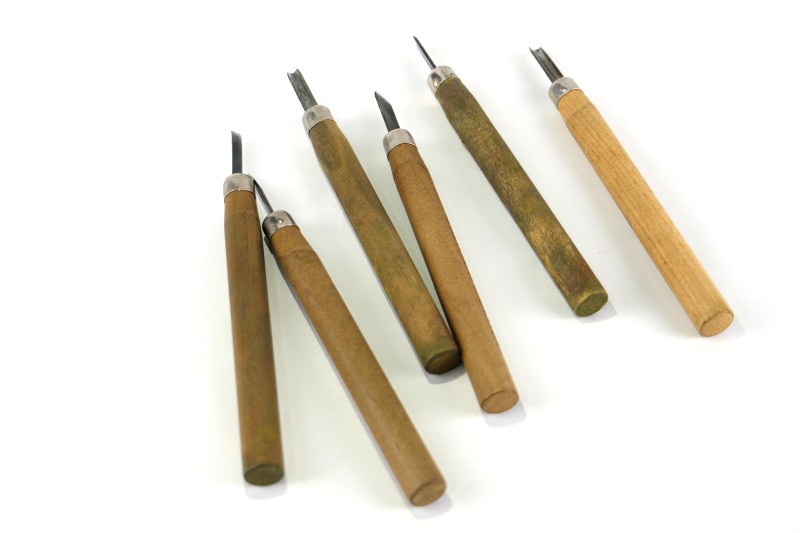
Known as kiri in the local language, this tool specializes in boring holes through the timber. This is an important step in hollowing wood out.
Despite its simplicity, the kiri is a hard tool to master. It takes time and practice to perfect it.
Without the gimlet, it is impossible to make precise holes on wooden pieces. In non-traditional woodworking, it is also used to drill holes for nails and screws.
6. Inkpot
In Japanese woodworking, precision is the name of the game. And what better tool to use for this job but the inkpot or sumitsibo.
Carpenters use this tool to mark long and straight lines on different wood surfaces. It works by using ink-blotted thread to mark and draw straight lines.
Simple it may seem, doing accurate markings is impossible without this tool. The sumitsibo is an indispensable piece of gadget essential for Japanese woodworking.
So, if you ever wonder if it's possible to repair buildings without nails, wonder no further. It's all about using the right tools for the right job, as they say. These and Japanese ingenuity are the secret to kumiki perfection.
Would you live in a house built with nothing but wood? Feel free to share your thoughts in the comment section below!
Up Next:
- The Best Emergency Food Kit
- Kubotan | How to Use a Kubotan in 3 Easy Steps
- Have You Prepared Your Kids for Surviving?
Don’t forget to stay connected with us on Facebook, Twitter, and Instagram!
-

 Paracord Projects1 year ago
Paracord Projects1 year agoParacord Projects | 36 Cool Paracord Ideas For Your Paracord Survival Projects
-

 Paracord Projects1 year ago
Paracord Projects1 year agoHow To Make Paracord Survival Bracelets | DIY Survival Prepping
-

 Medical Care1 year ago
Medical Care1 year ago21 Home Remedies For Toothache Pain Relief
-

 Knife Laws1 year ago
Knife Laws1 year agoAre Switchblades Legal? Knife Laws By State
-

 Do It Yourself1 year ago
Do It Yourself1 year agoSurvival DIY: How To Melt Aluminum Cans For Casting













Philip
January 25, 2022 at 5:04 PM
Wow!
This was truly different from the content that I usually see on the Survival Life site. I like it.